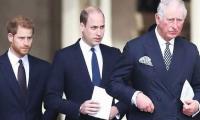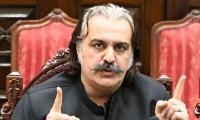As the census results pour in, we are presented with the stark reality that almost 64 percent of our population is rural with the balance residing in urban areas. While urbanisation appears to have increased in pace, it has been counteracted by the rapid population increase in rural areas.
Although the bulk of the urban population resides in Punjab and Sindh – the latter being the most urbanised province, with approximately 52 percent of its population in urban areas – a comparatively rapid population growth rate has been recorded in KP, Fata and Balochistan.
This is no surprise as these provinces are also the least developed and have the poorest education indicators, as any basic research will confirm. Since the relationship between literacy and population growth is usually inversely proportional, a comparatively lower population growth in the centres of industry and commerce – primarily in Punjab and Sindh – is also expected as these provinces have the benefit of an educated populace.
In the decades since the 1980s, even as our population grew, there was enough capacity in commerce and industry to absorb the insignificant output of professionals and specialists from various fields of study. While there was a glut in the fields of medicine, engineering and business administration, those with the luck and resources to have obtained their higher education in these fields from quality institutions were nevertheless able to find secure employment.
For the rest – the professionals and specialists from other fields – there was still hope for a better future as the Sunday classifieds of most English language newspapers promised job opportunities across most sectors and every employment hierarchy therein.
In the meanwhile, as we continued that journey from the 1980s through to the new millennium, there was little or no investment in manufacturing, heavy industry, mining, health, energy or education, to name a few important sectors of the economy. In those two decades, the only new industry to emerge in Pakistan, primarily through foreign direct investment, was telecommunications services. While it remains the most vibrant even in the present day, this industry has also matured to a level where its capacity to absorb skilled and semi-skilled labour will be minimal from here on.
The textile industry, utilising its influence in political and elite circles, negotiated subsidies and tax breaks to gain a competitive advantage. But with no value addition to its output, its exports are neither competitive nor lucrative for the national exchequer, turning it into a stagnant industry with little or no promise of growth. Oil and gas also remained traditionally reliant on foreign investment and foreign technological innovation. The onslaught of regressive tax policies and the dwindling security situation eventually resulted in a halt to such investments and was followed by their flight back to their country of origin.
Correspondingly, through its botched policies, the state’s heavy mechanical and heavy foundry complexes endured a steady collapse even as the national carrier and steel mills became lumbering, sick loss-making units. During this time, state policies continued to favour feudal structures, refusing to tax agriculture, engage in politically unfavourable land reforms and take gutsy measures to ensure a widening of the country’s tax base. Instead, revenue generation through taxation took the form of the state’s punitive focus on the traditionally-compliant salaried class and the established industry and services sectors in combination with a disruptively high indirect tax regime.
However, an important development in this time – especially in Punjab and KP – was the emergence of a class of traders from the informal sector, whose political leveraging and exploitation of their undocumented status has hitherto shielded them from taxation or regulation and whose wealth and influence has grown exponentially over the last three decades.
With the wealth generated from trading, this class also became the prime beneficiaries of the real estate boom in Pakistan. Buying and selling large tracts of land – often in cahoots with the state machinery – or constructing real estate for resale, this semi-literate section of the populace has paradoxically joined the ranks of the wealthiest class, a section of society that until the 1970s consisted primarily of the educated elite of the manufacturing and services classes.
As a result of their wealth generation and with traditionally few options to spend in Pakistan, this class created a huge demand for fast-moving consumer goods and luxury commodities. The mushrooming growth of malls and high-class retail outlets in all major urban centres of the country is a direct result of this demand. However, owing to the non-productive nature of trading and the real estate business, the activities of the trading class has not resulted in any value creation in the economy either in the form of jobs or skills.
For the bulk of the educated classes, all this has translated into fewer jobs and an increasing economic and intellectual frustration. Owing to the rapid decline in the country’s security situation – as was witnessed in the first decade of the new millennium – coupled with the saturation of employment in the services sector – which is a direct result of the declining pace of industrialization – escaping Pakistan remains the best possible option of a better tomorrow for young professionals.
For those who have chosen to remain, their only alternative has been to try and gain access to the traditionally-gated political arena, which offers them some hope of national course correction through the achievement of political franchise.
As a result, there is an ongoing struggle between three important actors in Pakistan. The first are the beneficiaries of the war economy, the armed forces, who were hitherto the most powerful class in Pakistan. Then come the mercantile capitalists, the class of traders that has emerged as the strongest contenders for power owing to their political and economic clout. And finally, we have the services class that has emerged as a contender for political power only recently and is gaining political representation in Pakistan. The mercantile capitalists are represented by the PML-N while the PTI is the flag-bearer of the interests of the services class.
On the national chessboard of politics, the PTI has waged its battle against the PML-N, which it recognises as its only obstacle in the path to the corridors of power. Punjab is the coveted prize that is to be gained from its defeat as the PPP – the traditional representative of the masses – is in maintenance mode. The PML-N, it appears, has lost round one of that battle and is now struggling to redesign its political strategy as the next elections loom on the horizon.
The armed forces, while they wish to remain outside the political arena, are wary of the economic bungling of the political elite and are convinced that stability in Pakistan requires that their institution retain control over foreign policy, domestic security and a significant part of the national budget. A path to progress, if one is to be charted out anytime soon, will not happen before a consensus on power-sharing is arrived at among these three classes and their competing interests.
The writer is a freelancecolumnist.
Email: kmushir@hotmail.com
Twitter: @kmushir
The post-election situation will be troublesome and worrisome for Modi
Most favourable concept developed so far revolves around public-private partnerships
There is only one way forward: cut non-development expenditures, including non-combat defence expenditure
The plan aims to ensure financial stability, control inflation, and promote economic prosperity
Currently, a staggering 60 per cent of government revenue is being wasted on interest payments
It seems that Beijing’s goodwill, stronger financial stature, principle of non-interference in domestic affairs and...







